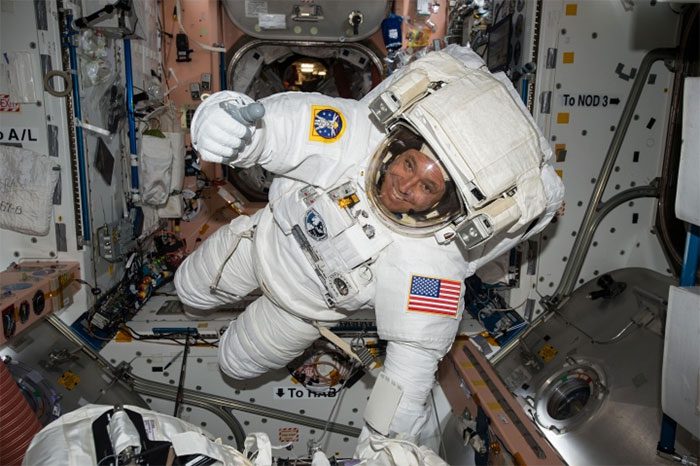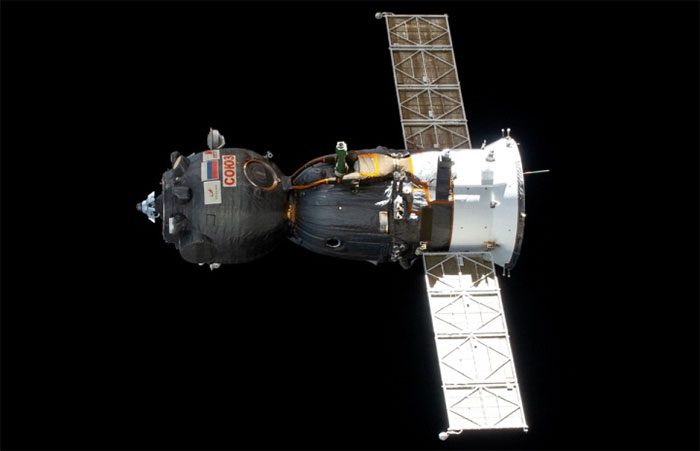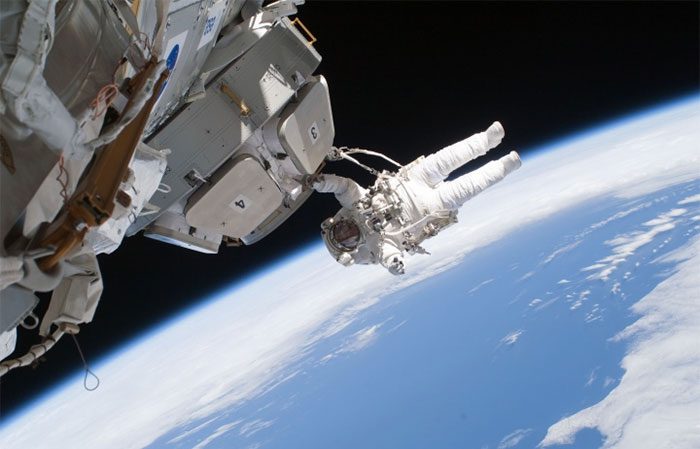Becoming a NASA astronaut involves passing through numerous stringent selection phases, but even once selected, there is no guarantee that you will get to fly in space.
Becoming an astronaut is a significant commitment for everyone involved. Aspiring astronaut candidates, typically selected in their 30s and 40s, often have to leave behind prestigious careers for a chance to fly in space, even when the odds are slim.
Each year, over 18,000 candidates apply for the U.S. National Aeronautics and Space Administration’s (NASA) space exploration program, and not everyone makes it through the selection process.
Stringent Requirements
NASA has strict requirements for selecting someone to become an astronaut. This job not only requires top physical fitness but also demands skills and expertise to handle challenging tasks aboard a spacecraft or at a space station.
The basic requirement from NASA is a bachelor’s degree in engineering, biological science, physical science, computer science, or mathematics, followed by three years of professional experience (or 1,000 hours of pilot-in-command time in jet aircraft).

NASA’s astronaut selection process is quite stringent, with only a few dozen selected from thousands of applications. (Photo: NASA)
Candidates must also pass NASA’s astronaut physical examination. However, many other skills are also considered, such as scuba diving, wilderness experience, leadership skills, and proficiency in different languages (especially Russian, which all astronauts today must learn).
What Does an Astronaut Training Cohort Look Like?
NASA has conducted 22 astronaut training classes since the first group was selected in 1959 for the Mercury program. The American space program has evolved significantly since then.
Some of the initial astronaut classes were primarily selected from the military, particularly test pilots—individuals deemed ready to handle extreme risks in space. As NASA’s program developed, they needed a wider array of skill sets.
Notable astronaut classes include the fourth class (1969), known as “The Scientists,” which included Harrison J. Schmitt, the only geologist to have walked on the Moon (Apollo 17 mission), the eighth class in 1978 (which included female candidates, African Americans, and Asian Americans), the 16th class in 1996 (the largest class with 44 members selected for missions to build the International Space Station), and the 21st class in 2013 (the first class with a gender ratio of 50/50).
American Astronaut Vehicles
Today, American astronauts have more options for space missions, flying on both American and Russian spacecraft. A prime example is the Soyuz spacecraft from the Russian Federal Space Agency (Roscosmos) for missions to the International Space Station (ISS).
In the coming years, NASA hopes to go beyond low Earth orbit again with missions to the Moon and Mars using the Orion spacecraft developed by the agency.
In addition to NASA and Roscosmos vehicles, American astronauts and those from other countries can also utilize private spacecraft from SpaceX and Boeing for space missions. Space travel may soon be privatized within the next decade.

Russian Soyuz spacecraft. (Photo: NASA).
Where Will the New Astronauts Go?
New astronauts may begin their careers traveling to the International Space Station or on upcoming Moon missions. The ISS is expected to remain operational until 2024 but may be extended to 2028 or even longer.
Following the success of Artemis 1, the next destination for young astronauts is likely to be the Moon. If all goes well, plans for a mission to Mars by 2030 could also be a goal for new astronauts.
What Do Astronauts Do?
While the public mainly focuses on astronauts when they are in space, in reality, astronauts will spend only a small portion of their careers in the air. Most of their time will be devoted to training and supporting other missions.
Initially, astronaut candidates undergo about two years of basic training, where they learn survival training, language, technical skills, and other necessary competencies to become astronauts.
Upon graduation, new astronauts can be assigned to space missions or given technical roles within the Astronaut Office at the Johnson Space Center in Houston. These roles may include supporting current missions or advising NASA engineers on how to develop future spacecraft.

Most of the astronauts’ time will be spent on training and supporting other missions, with time spent on space missions being a small fraction. (Photo: NASA)
Passing the Selection Process
Out of 18,353 astronaut applications submitted to NASA, only a few are chosen. The first step involves NASA’s human resources department reviewing each applicant to see if they meet the basic standards. All qualified candidates then undergo evaluation by a panel—the Astronaut Selection Committee.
The selection committee comprises about 50 members, primarily current astronauts. The committee selects a few hundred of the most qualified candidates, after which they check references for each applicant.
After the first round, the number of candidates is reduced to just 120. The astronaut selection committee then invites these candidates for interviews and medical examinations. The top 50 candidates go through a second round of interviews and additional medical checks. The final astronaut candidates are chosen from this group of 50.
How Are Astronaut Candidates Informed?
Lucky candidates who make the shortlist receive a call from the head of the Flight Operations Directorate at NASA’s Johnson Space Center, as well as the head of the Astronaut Office. NASA asks candidates to only share the news with their immediate family until an official announcement can be made.
NASA typically holds a press conference to announce the new candidates, inviting journalists and social media users to ask questions about the new astronaut class. Afterwards, the candidates quickly dive into training, leaving them little time to interact with the outside world, at least for a few months.


















































